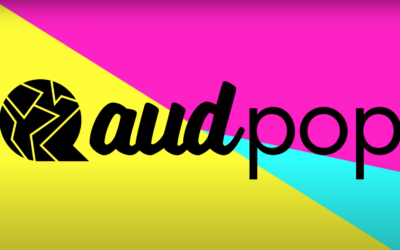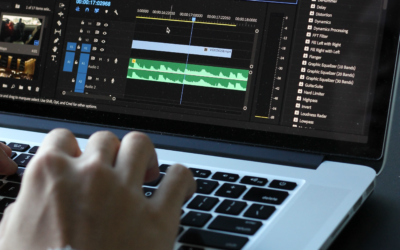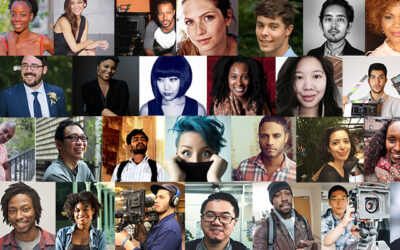Behavioral Psychology:
It’s human nature to share. Sharing ideas, sharing stories and sharing experiences. In the book Into The Wild, by Jon Krakauer, one of the last journal entries of Chris McCandless during his time in the Alaskan wilderness read “happiness is only real when shared.” People enjoy sharing. This article explores how technology has changed what, how and with whom we share our lives throughout the last 25 years.
1990:
Returning from a trip to California? Better get that film developed. Sharing stories and images existed in the thin transparent sleeves of photo albums. Gather ‘round the table, kids, it’s time to look at more baby pictures! The act of sharing photo albums brought people closer to the action. Users took photos of places and things they loved and recommended them to others. Word-of-mouth promotion had photos to back up claims.
The focus group has always been a popular method for brands and corporations to garner information from the front-lines. Meticulous planning and tremendous resources are required to bring together an effective focus group.
1995:
A case-study taught in business schools around the world, Kodak resisted the digital shift in photos claiming the quality and tangible benefits of film would keep their customers loyal. Enter Fuji. Unlike Kodak, Fuji anticipated the shift to digital and took huge market share. Although unaffordable for most, the convenience of digital combined with the increasing popularity and accessibility of the personal computer made for a flattening of the world as it applied to user-generated content.
Computer generated surveys allow brands to provide first-hand accounts of their experiences using a company product or service. Companies compile responses in complicated databases requiring advanced computer skills to interpret.
Source: suggestkeywords.com
2000:
With personal computers taking over and film enthusiasts falling on the wrong side of history, the mailbox is losing ground to the inbox. Email clients like Yahoo, Lycos, Hotmail and AOL create global messaging … free. Users are subscribing to email lists, joining groups, chatting online and sharing their own stories. Brands use the digital shift to post images and share testimonials online instead of in catalogues. The ability to collect data from customers is easier. Inviting users to participate in surveys, providing feedback and writing reviews are all improved with the introduction of email.
2005:
Social media ignites. With Facebook leading the way, platforms like Digg, Blogger and YouTube introduce platforms for influencers and connectors to meet. The world being flat takes on new meaning as internet users connect virtually through chat, image sharing, and bringing much of their personal identity online with them. Authentication combined with your social network allow brands, for the first time, a real sense of their online following. Business pages, content marketing, pay-per-click, search engine marketing and search engine optimization are no longer buzzwords: they are standard operating procedure for companies doing business online.
Users are sharing … a lot. In some cases too much, but brands are benefitting. Consumer data pours into marketing analysts in droves. Brands are finding new ways through social media to interact with the customers. Social media becomes a lead referral source for online traffic, showing the value is more than just poking friends.
Souce: http://www.bandt.com.au/marketing/user-generated-content-king
2010:
Mobilegeddon is on its way. According to TechCrunch, in 2009, the iPhone occupied only 14% of market share. Research in Motion (Blackberry) owned 20% market share in the smartphone world. The percentage of the population with smartphones is growing rapidly. Users now have a high definition digital camera and a high powered video camera in their pocket. The ability to share content from anywhere and record moments in time reaches unprecedented levels. Brands react in real-time as users tweet about their products.
The birth of YouTube stars, Instagram sensations and Facebook advertising put brands in the driver’s seat to reach hyper-targeted audience. User-generated-content illudes brands. Social media contests prove trivial and many platforms own the content users create.
2015:
The future is … well … now. Customer service has never been more important. The journey from consumer to customer is long and meandering. Check reviews on Yelp, post an inquiry on social media: “I need a chainsaw, any recommendations?” Visit the company website to view media and hear from customers. There is no more clicking on an ad or viewing a television show prior to purchase. Consumers have the world at their fingertips. Savvy brands are using this as an advantage and engaging with their power-users at the source. Brands innovating with new platforms like Snapchat stories and creating high quality user generated content through hosting a video contest with The Audience Awards are moving the needle when it comes to engaging with customers.
And Beyond…
What does the future hold for digital marketing and user generated content? Seeing as the top-down media model has been all but obliterated in the last decade, the individual continues to gain consumer power through their voice on existing and new platforms. One thing is for sure, brands paying attention to what their users are talking about can win by listening.







